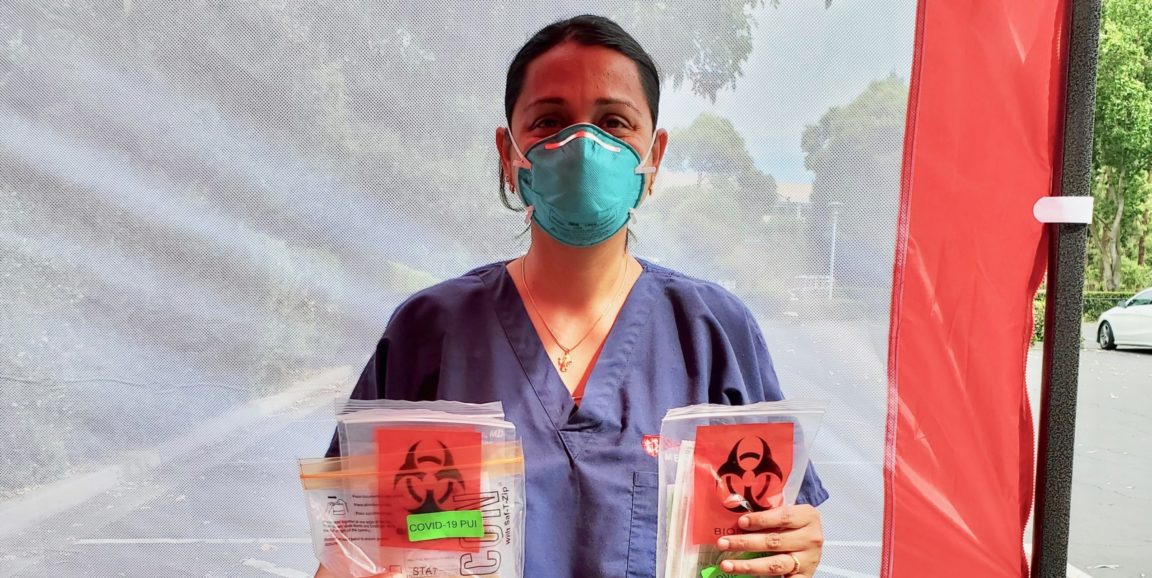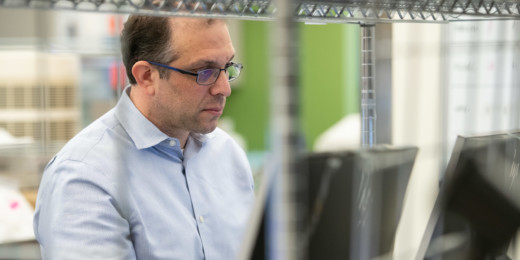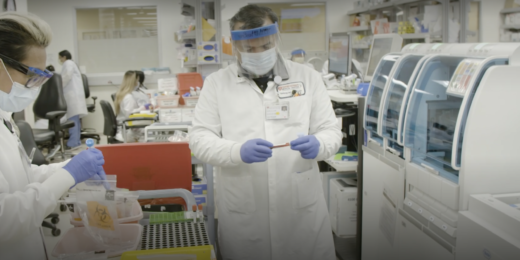I've never been in such a hurry to shove something up my own nose.
Ick factor aside, I'm pretty excited about new research by Stanford pediatric infectious disease expert Yvonne Maldonado, MD, that indicates that self-swabbing is an easy, effective and quick way to obtain a sample of nasal secretions for testing for the virus that causes COVID-19.
This new process differs from the current gold-standard of testing, in which a health care worker collects a sample by swabbing deep within a person's nasal cavity or back of the throat. That procedure can be disconcerting and uncomfortable for patients, and requires the person collecting the sample to wear protective equipment to shield against an uncontrollable cough or sneeze. The lower nasal swabs are much more comfortable.
Maldonado and senior research data scientist Jonathan Altamirano published their results on Friday in the Journal of the American Medical Association.
As I explain in our article about the study:
Allowing people who suspect they may have COVID-19 to collect their own sample has many advantages. Sample-collection kits could be widely distributed, allowing more people to be tested. Those using the kit wouldn't have to travel to a testing site, negating the risk of transmission to health care workers and others with whom they interact in transit. Self-collection would also conserve supplies of personal protective equipment used by health care workers.
Maldonado and Altamirano collaborated with Stanford Medicine colleagues Andra L. Blomkalns, MD, the Redlich Family Professor and professor and chair of emergency medicine, and Prasanthi Govindarajan, MD, associate professor of emergency medicine, to conduct the study of 30 people who tested positive for SARS-CoV-2 at Stanford Health Care in March of this year.
Study participants were given written instructions and a short video about how to collect a nasal swab for a follow-up test. They were then asked to return to Stanford for drive-through testing.
My article describes what happened next:
At that visit, they collected their own specimens by swabbing both nostrils. Then, a physician collected two additional samples using a nasal swab and a swab applied to the back of the throat and the tonsils. All three samples were tested for the presence of the virus at the Stanford Clinical Virology Laboratory.
Of the 30 participants, only one had results that differed among the three study samples. That person's self-collected nasal swab tested positive for the virus, but the two samples collected by the health care worker tested negative.
Although the sample size was small, there are also hints about the timing of infectious period for the novel coronavirus. Of 12 people who returned for their follow-up test within two weeks of first experiencing symptoms, seven tested positive for the virus in that second test. In contrast, of the 11 people who returned for testing more than two weeks after symptoms began, only two tested positive in the follow-up test.
As Maldonado told me,
"It is critical for us to understand how long an infected person may remain infectious and what the pattern of transmission might be within their household ...This information would help public health workers craft guidelines as to how long a person with COVID-19 should remain quarantined and when it is likely to be safe to interact again with family members and co-workers. Understanding the timeline of viral shedding will be particularly important for previously infected health care workers who are needed to care for other COVID-19 patients."
The researchers are now working to validate their findings in a larger study.
Photo of Prasanthi Govindarajan with a self-test kit by Jonathan Altamirano






